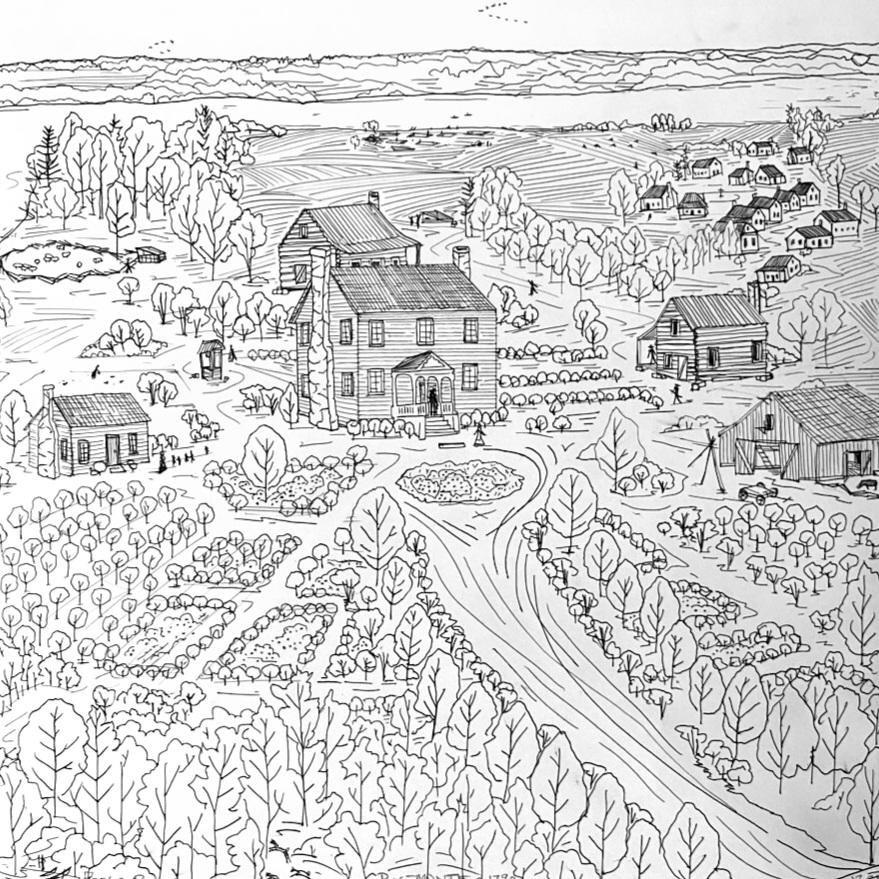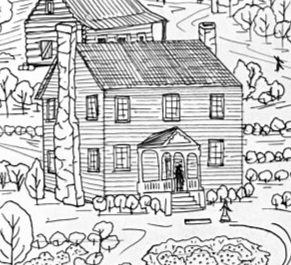<<< BACK
|
"Massacre at Hayes Station", November 19, 1781 Laurens County, SC

Vector drawing proposal, 10X20
<<< BACK
|
|
| |
For comments, questions, or to arrange a studio visit , please
contact: Info@perez-rubio.com

Vector drawing proposal, 10X20
Rosemont, The Home of Ann Pamela Cunningham : (Rosemonte Plantation, Rose Monte Estate) Rosemont, dating from ca. 1790 to 1930, is an excellent example of an Upland, or Piedmont,
plantation associated with indigo, tobacco, and eventually cotton production. Archaeological research has revealed that the features and
architectural remains associated with the plantation have strong integrity and are capable of providing information on intra-site patterning,
subsistence data, refuse disposal patterns, architecture and organization of the plantation, and the display of wealth by the plantation owner.
An examination of the associated landscape features reveals that the gardens can still be traced, original plantings are present, walkways are
preserved, and the landscape and gardening traditions of the period are evident. Archival research indicates that the development of the
plantation was begun sometime between 1750 and 1790. The plantation reached its zenith during the second quarter of the nineteenth
century and the main house stood until it burned in 1930. In addition, Rosemont Plantation is intimately associated with Ann Pamela Cunningham,
who was born at Rosemont in 1816, inherited Rosemont from her father, operated the plantation through the Civil War, and died at Rosemont in 1875.
She worked tirelessly to save George Washington’s Mount Vernon Plantation for the nation, organizing the first meeting to raise funds for the purchase,
negotiating with the owners of Mount Vernon, serving as the first Regent of the Mount Vernon Ladies’ Association of the Union, and overseeing the restoration
of the house. Listed in the National Register June 11, 1993.
|
|